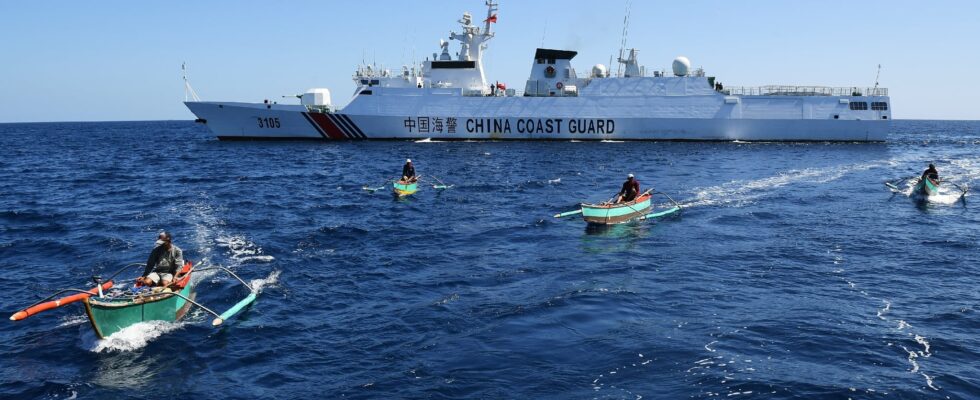China does not always have good relations with its neighbors. Starting with Japan, the Philippines and Taiwan, an island it claims as part of its territory. In recent weeks, Beijing has not sought to smooth them over, quite the contrary. The Chinese are waging a campaign of intimidation from the coasts of Southeast Asia to the East China Sea, via Taiwan.
The latest incident was on Saturday, August 31. Japan condemned late in the day the incursion into its territorial waters by a Chinese navy vessel off southern islands. A Chinese survey vessel was spotted in Japanese waters west of Kuchinoerabu Island (southwest) at dawn and sailed south before leaving waters southwest of Yakushima Island, the Japanese Defense Ministry explained. Following the incident, the head of the Asian and Oceanian Affairs Bureau of the Japanese Foreign Ministry, Hiroyuki Namazu, “expressed Tokyo’s strong concern and protest” to the Chinese embassy in the country, according to a statement.
Incursions into Japan and the Philippines
A few days earlier, on Tuesday, August 27, the Japanese government had already condemned the incursion of a Chinese military plane, this time into its airspace, denouncing “a serious violation” of its sovereignty. According to the Japanese Ministry of Defense, a “Y-9 spy plane” of the Chinese army briefly entered Japanese airspace, off the Danjo Islands, in the Nagasaki prefecture, west of the southern island of Kyushu.
The case is not new. Last June, Tokyo already protested to Beijing after four Chinese ships, apparently armed, entered disputed and uninhabited islands in the East China Sea. Called the Senkaku Islands in Japan, and the Diaoyu Islands in China, they are administered by Japan, but Chinese coast guard ships frequently venture nearby, causing diplomatic tensions.
China claims, for historical reasons, almost all the islets in the South China Sea, facing other coastal countries: the Philippines, Vietnam, Brunei, Malaysia. The incidents in the area are endless. On Saturday again, China and the Philippines accused each other of deliberately causing collisions between coast guard vessels near a disputed reef in the South China Sea. According to a Philippine spokesman, Commodore Jay Tarriela, the Chinese coast guard vessel “directly and intentionally rammed” the Philippine vessel BRP Teresa Magbanua. This collision is the fifth incident with Chinese vessels this month, Philippine authorities said. China is the “biggest disturber” of peace in Southeast Asia, the Philippine defense chief said Tuesday, a day after yet another incident.
Security agreement between Tokyo and Manila
The standoff between China and the Philippines has fueled fears of a potential conflict that could lead to Washington’s intervention because of its mutual defense treaty with Manila. In April, during previous incidents, US President Joe Biden said that “any attack on Philippine aircraft, ships or armed forces in the South China Sea will trigger the implementation of the mutual defense treaty” between the two countries. Earlier this week, China warned the United States against supporting the Philippines in the South China Sea, while Washington pledged to support its allies during a high-level meeting in Beijing on Wednesday.
In the face of the growing Chinese threat, the Philippines and Japan finalized a security pact in early July, after years of negotiations. The reciprocal access agreement (RAA) allows the Armed Forces of the Philippines (AFP) and the Japan Self-Defense Forces (JSDF) to significantly expand their joint military activities, including large-scale exercises and joint response to a variety of contingencies – from disasters to armed conflicts. The agreement paves the way for the transfer and exchange of increasingly sophisticated weapons systems.
Their first joint exercise was held on Friday, August 2, in the South China Sea, to strengthen their cooperation against China. Two vessels, one Japanese and one Philippine, tested their communications and conducted tactical maneuvers in the South China Sea, near the Philippine coast. “The exercise is part of efforts to strengthen regional and international cooperation to achieve a free and open Indo-Pacific,” the authorities said in a joint statement at the time.
